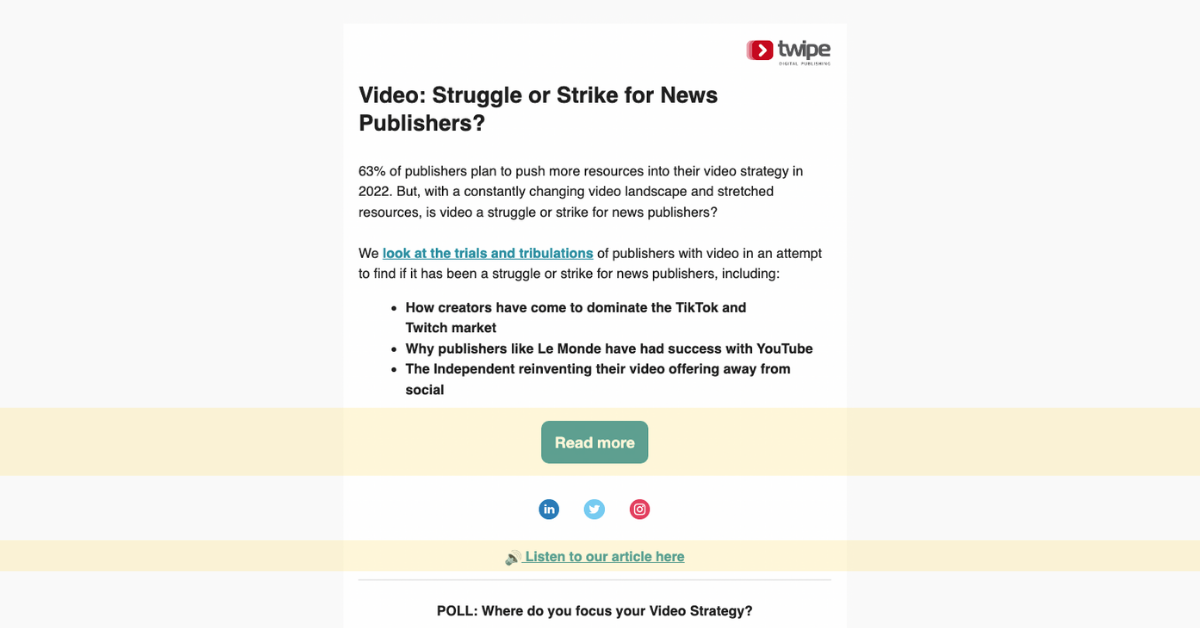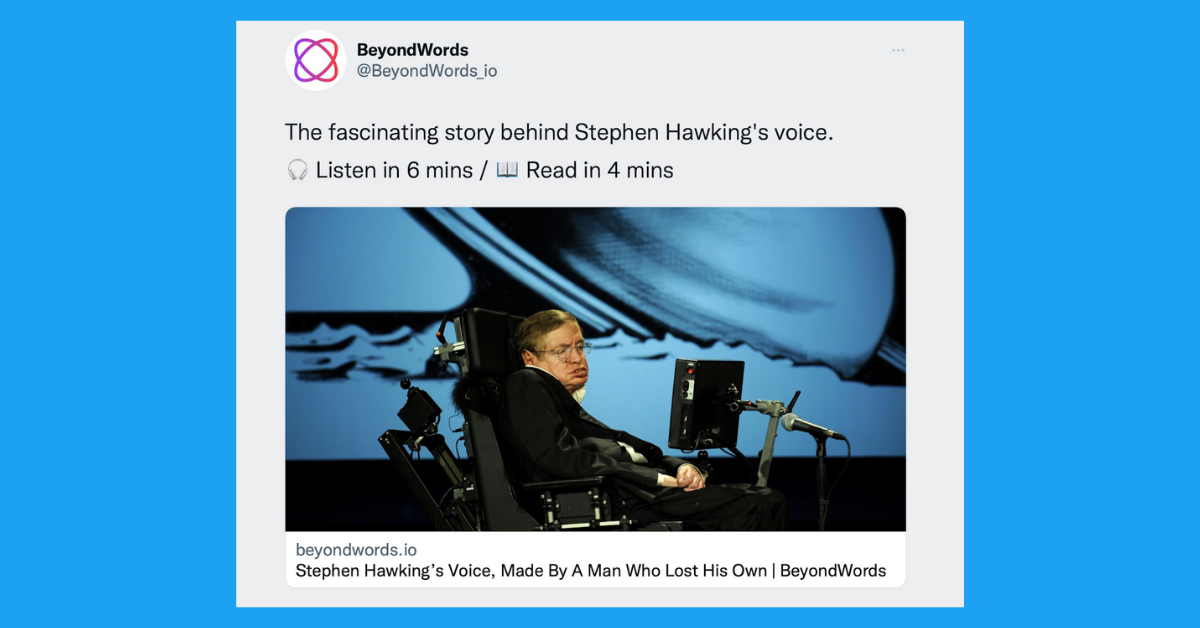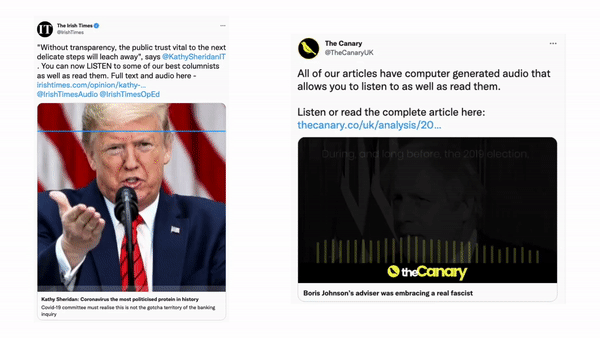You've added audio narration to your written content. But have you updated your distribution strategy to match?
Many publishers keep promoting their content the old way: like it's read-only. When sharing via social media posts, email newsletters, and other channels, they don't mention that there's an audio option.
And so audiences without the desire or ability to read continue to scroll on by.
If you advertise audio functionality up front rather than leaving visitors to discover it for themselves, you're more likely to attract clicks from those with listening needs and preferences — people who are on the go or too tired to read, for example. This can make a major difference to your engagement metrics, both offsite and onsite.
Keep reading or listening for three distribution tricks that will boost traffic to narrated content.
1. Switch up your CTAs

The easiest place to start is with your calls to action (CTAs). Don't just tell people to read or learn more: tell them to go listen to your content. This simple trick can improve click-through when you're directing people to your content from:
- the page's meta description, which appears on search engine results pages;
- the page's og:description, which appears on link previews;
- posts and comments on social media platforms or online communities;
- other pieces of content, such as related videos or guest posts;
- landing pages, such as content hubs or categories; and
- newsletters and other communications.
You could also try incorporating separate CTAs, like Twipe does in its newsletter. This allows them to measure initial interest in the audio version (through link tracking) and capture clicks they wouldn't have otherwise.
2. Provide listening times

Providing reading time estimates up front can improve engagement with written content.¹ As Maria Konnikova wrote in The New Yorker², "The more we know about something — including precisely how much time it will consume — the greater the chance we will commit to it."
When your content is listenable, you'll want to include the audio playback time too. Listeners are often busy multitaskers, so this information can be even more valuable in helping them manage their time.
3. Share audio snippets

Sharing an extract lets your writing speak for itself. It gives readers a good idea of what to expect and helps convince them to click through.
The same goes for audio content.
Try creating short video "trailers" for your audio articles, which you can share on social media. This works particularly well on platforms with autoplay functionality, like Twitter and Facebook, because the sound will help grab users' attention before they scroll past.
Start attracting listeners, not just readers
When distributing narrated content, audio functionality is a USP that you should use to your advantage. Promoting it actively — rather than leaving site visitors to discover it for themselves — will help boost traffic and engagement.
Looking for new ways to convert your content into audio? With our AI voices and embeddable players, providing quality narration has never been easier.

Sources
- How estimated reading times increase content engagement, MarTech, published May 2022
- A List of Reasons Why Our Brains Love Lists, The New Yorker, published December 2013